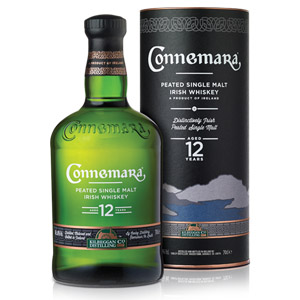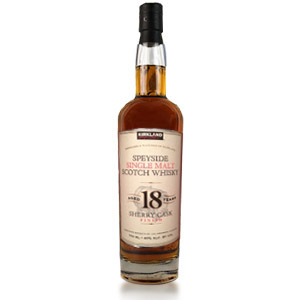Connemara was introduced to the world during the early stages of the current whisky boom, when independent Davids were taking on stagnant industry Goliaths to great success and international renown, and boundaries and envelopes were being pushed with every release. Ahh, the halcyon days of 2010. Even though every stone in the whisky world has been turned over since then, Connemara remains the only peated Irish whiskey. It is also rare in that it is double-distilled (not triple, like many Irish whiskies) and a single malt. The brand consists of an entry-level NAS “Connemara Peated”, this 12 year-old, and a cask-strength NAS edition. Connemara and the Kilbeggan Distillery (formerly Cooley) are now owned by Beam Suntory. Ahh how the underdogs have been slurped up by the industry titans, a sort of Saturn Devouring His Children played out in the whisky industry. There’s an image for you.
Connemara is named after a defunct Irish distillery, and the whiskey is produced as all Irish whiskey (and Scottish) would have been before the advent of drum maltings: with peat fires. Connemara is reportedly peated at around half the phenol ppm of Islay malt, rendering it milder. There is some confusion about the source of Connemara’s peat. Despite there being peat bogs in the Connemara area of Ireland, some Internet sources claim that the peat is sourced from Scotland or Wales. My personal opinion is that if the peat were sourced from Ireland, it would be plastered all over the website. That implies the company is embarrassed about the source of their peat, and you can read into that what you will.
The color of the whiskey, like most peated Scottish single malts, is very pale.
Nose: Green, vegetal peat. This is just how I imagine smoked cucumber would smell, if such a thing existed. The peat smells like it was composed entirely of green leafy things decomposed in inland bogs (no sea notes). Lime peel. Watery.
Palate: Medium-bodied. Light malt with fresh tobacco leaf, birch beer, and loads of black pepper. No off-notes, but austere.
Finish: Long. Vanilla. Earthy, meaty peat finally, with notes of roasted mushrooms and tofu. Mild, cake-dough cereal note. No bitterness.
With Water: A few drops of water intensifies the cucumber note, and adds a thin layer of vanilla sweetness to the palate. Water doesn’t hurt here.
Overall: Not in the same category as peated Islay malts in this price range, which have depth of flavor and complexity beyond what this Connemara can reach. Still, it is an interesting take on a peated single malt, and is well-crafted without bitterness or off-notes. Notable for its individuality among the Irish category, but not something that your average malt-head will choose over an Islay malt like Lagavulin 16, Laphroaig 10, or Caol Ila 12.
I’m marking this one Recommended with some reservations: It’s well-made, but not cheap. It’s peated, but mildly so. It’s a milestone and outlier in Irish whiskey, but the proof is in the glass. If you like your peat on the milder side, this is definitely worth a look. $70, though? I’m not sold.








I’d really like to try a dram of this because I’d read about it before. There’s obviously some novelty value in the only peated Irish whiskey.
But your take brought my experience with Ledaig 10 to mind: for the price, it doesn’t seem like Connemara does anything that several Islay malts don’t do better, and for less money to boot.
Also:
A. The absence of maritime notes on the palate does suggest an inland peat source. Could be Irish peat after all…
B. What is “birch beer”?
Birch beer is like root beer, but made with birch bark. https://en.wikipedia.org/wiki/Birch_beer It’s a New England thing. Sort of like cream soda, but less sweet and with more bite.
Honestly I had Budweiser and their “exclusive beechwood aging process” in mind (if they even still do that). Got “birch” confused with “beech”. I thought that was a very strange note to find in a review of high-end whiskey.
Coincidentally I stumbled on this one at a recent visit with co-workers to a downtown NYC Irish bar. As I don’t often get excited about Irish whiskey, it was nice to see a peated expression on the menu. It was the entry level NAS version. Reminded me of Highland peat, be it BenRiach Curiositas, Eduador Ballechin, peated AnCnoc, peated Ardmore…you get the picture. It was a novelty, and a perfectly acceptable one, but not a dram I would be enthusiastic to return to.